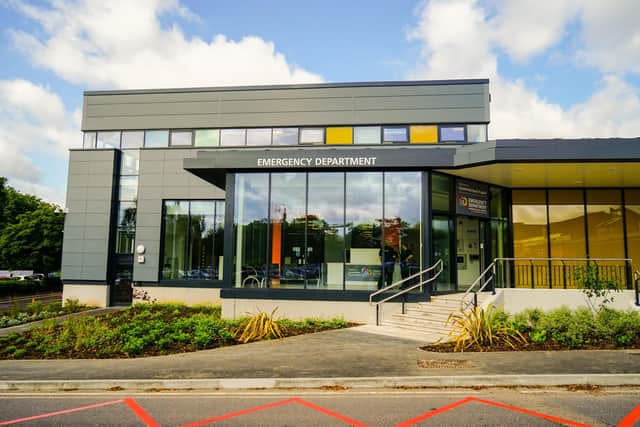£5.3 million needed to restore buildings and equipment at Chesterfield Royal Hospital to expected standards
and live on Freeview channel 276
However the data reveals that a £2 million portion of this figure is required to fix “high-risk” issues – which are defined by the NHS as maintenance priorities which pose a risk of “catastrophic failure, major disruption to clinical services, or safety deficiencies liable to cause serious injury”.
Chesterfield Royal Hospital NHS Foundation Trust say the high-risk items identified include water storage, ventilation and electrical infrastructure.
Advertisement
Hide AdAdvertisement
Hide AdLower-risk priorities at Chesterfield Royal Hospital (CRH) have been risk-assessed “across all the equipment, IT and estate”, said a spokesperson, adding that there would be a refurbishment of the Trust’s patient kitchen area and a programme of replacement for larger machines such as ultrasound and anaesthetics machines.


Across England a growing number of buildings are in a poor state - with the repair bill climbing to £11.6 billion last year.
NHS Providers, the body which represents NHS hospital, mental health, community and ambulance services, said the rate at which the bill was rising is "alarming" and urged the Government to provide much-needed investment in broken buildings.
CRH has received Government funding worth £19 million which was used to build its new £27m Emergency Department – officially opened by HRH Princess Anne in July last year.
Advertisement
Hide AdAdvertisement
Hide AdDuring the same month the hospital opened its £2m Health and Wellbeing Hub – funded by the Chesterfield Royal Charity.
A spokesperson for CRH said the hospital, which cares for a population of 400,000 and has around 5,000 staff, conducted a full survey two years ago and has a spending plan for backlog jobs each year over the next three years.
This includes everything from the physical condition of the buildings, functional suitability, space utilisation, quality, fire, health and safety and environmental management.
The spokesperson added: “The Trust has plans to continue the developments this year including the full refurbishment and reconfiguration of some wards, lifts and other patient areas.
Advertisement
Hide AdAdvertisement
Hide Ad"This involves increasing the number of en-suite bathrooms and a focus on privacy and dignity through design for our patients. This is due to be completed by the late spring to summer.
"There are also plans to refurbish the lifts and upgrade to parts of the electrical infrastructure to support initiatives such as the electrical steam generation for sterilisation.”
Dr Hal Spencer, Chief Executive of CRH, said: “We are refreshing our five-year estate strategy to ensure it meets need and prevents waste through inefficiencies.
“This is on top of a challenging financial position which is seeing us sharpen the focus on all spending, while maintaining patient quality and striving for exceptional care.
Advertisement
Hide AdAdvertisement
Hide Ad“There is always more we could do to benefit our patients and our goal is to ensure we prioritise the money from the public purse to have the bigger impact.”
In October, the Department for Health and Social Care confirmed 42 hospital sites across the country sites have reinforced autoclaved aerated concrete (Raac) and must be repaired - but none of these were at Chesterfield Royal Hospital.
Chief executive of NHS Providers Sir Julian Hartley said the presence of the collapse-risk concrete "is a symptom of a far bigger and long-running problem".
He added: "Many trusts – mental health, community, hospital and ambulance services – need major investment to refurbish ageing buildings and tackle risks to the safety of patients and staff," he added.
"We need the Government to shift gear and inject a significant shot in the arm of capital investment in the NHS."
